Nemo AI, developed by NVIDIA, is an open-source toolkit for building advanced conversational AI models. This comprehensive analysis explores its functionalities, advantages, limitations, and emerging trends as we approach 2025, emphasizing its role in enhancing human-AI interactions across various industries.
Nemo AI: A Comprehensive Analysis for 2025
Nemo AI is an open-source toolkit developed by NVIDIA for building conversational AI models, focusing on speech recognition, natural language understanding, and text-to-speech synthesis. It operates through a modular framework that combines neural networks for end-to-end processing.
Audio input is transformed into text using automatic speech recognition (ASR), while natural language understanding (NLU) analyzes the text to determine user intent. Dialogue management coordinates responses, which are then converted back to audio via text-to-speech (TTS) systems. This architecture enables developers to create customizable, scalable AI applications capable of human-like interactions across various industries.
Introduction
In the rapidly evolving landscape of artificial intelligence, Nemo AI has emerged as a powerful toolkit designed to facilitate the development of conversational AI models. Developed by NVIDIA, Nemo AI represents a significant advancement in enabling developers to build, customize, and deploy state-of-the-art neural modules for speech and language processing. As we advance into 2025, Nemo AI has become a go-to solution for organizations seeking to create efficient, scalable AI systems that understand and generate human-like language.
This article provides a detailed examination of Nemo AI, encompassing its definition, core functionalities, operational mechanisms, advantages, limitations, practical applications, and emerging trends. It aims to equip professionals with a thorough understanding to facilitate informed decisions regarding its adoption and implementation.
What is NVIDIA NeMo?
NeMo = “Neural Modules”: It’s NVIDIA’s open-source, end-to-end cloud-native platform for building, customizing, and deploying large-scale generative AI—LLMs, vision-language models (VLMs), speech AI, and autonomous agents—anywhere you want: on-prem, cloud, or edge.
Definition and Scope
Nemo AI is defined as an open-source toolkit developed by NVIDIA for building conversational AI models, focusing on neural modules that enable speech recognition, natural language understanding, and text-to-speech synthesis. The name “Nemo” is derived from “Neural Modules,” reflecting its modular architecture that allows developers to mix and match components for custom AI solutions.
Unlike general-purpose AI frameworks, Nemo AI specializes in end-to-end conversational systems, supporting tasks from audio processing to dialogue generation. Its scope extends across industries such as customer service, healthcare, and entertainment, where it powers voice assistants, chatbots, and interactive systems. Nemo AI’s open-source nature ensures accessibility, fostering community contributions and rapid innovation.
🧩 5-Minute Anatomy of NeMo
| Lego Brick | What It Does |
|---|---|
| NeMo Core | PyTorch-based runtime + trainer that handles multi-GPU / multi-node magic under the hood |
| NeMo Collections | Drop-in recipes & checkpoints for NLP, ASR, TTS, computer vision, and multimodal tasks |
| Neural Modules (NMs) | Re-usable Lego blocks—encoders, decoders, loss functions—that snap together via typed I/O ports |
| Application Scripts | Ready-made train.py, eval.py, export.py scripts so you can fine-tune a 70 B Llama on your legal docs with one command |
Historical Context
Nemo AI traces its origins to NVIDIA’s early investments in AI research, particularly in speech and language technologies. Launched in 2019 as an open-source project, Nemo AI was initially focused on speech recognition and synthesis, building on advancements in deep learning. Over the years, it has evolved through community contributions and NVIDIA’s updates, incorporating features like multilingual support and real-time processing.
By 2025, Nemo AI has matured into a comprehensive toolkit, reflecting broader trends in AI development toward modular, customizable systems that address the limitations of monolithic models. This evolution underscores NVIDIA’s commitment to democratizing AI, making sophisticated tools available to developers worldwide.
Core Functionalities
Nemo AI is distinguished by a robust set of functionalities that support the full lifecycle of conversational AI development:
- Speech Recognition 🎤: Converts audio inputs into text with high accuracy, supporting multiple languages and accents.
- Natural Language Understanding 🧠: Analyzes text to extract intent, entities, and context for meaningful responses.
- Text-to-Speech Synthesis 🗣️: Generates natural-sounding speech from text, with customizable voices and intonations.
- Modular Architecture 🛠️: Allows developers to combine pre-trained models for custom applications, reducing development time.
- Multilingual Support 🌐: Handles diverse languages, enabling global deployment.
- Real-Time Processing ⚡: Supports low-latency operations for interactive systems like voice assistants.
- Customization Tools 🎨: Provides APIs and libraries for fine-tuning models to specific domains.
These functionalities make Nemo AI a versatile platform for building sophisticated conversational systems.
Operational Mechanisms
Nemo AI operates through a modular framework that integrates neural networks for end-to-end processing. The mechanism begins with audio input, processed by automatic speech recognition (ASR) models to generate text. Natural language understanding (NLU) then interprets the text, identifying user intent. Dialogue management coordinates responses, while text-to-speech (TTS) converts them back to audio.
Nemo’s use of transformer-based architectures ensures efficient training and inference, with pre-trained models available for customization. Developers can fine-tune these models using domain-specific data, deploying them on edge devices or cloud infrastructure for real-time applications. This operational flow enables seamless, human-like interactions.
Benefits
The adoption of Nemo AI offers several advantages for developers and organizations:
- Open-Source Accessibility 📂: Free to use, fostering community-driven innovation and reducing costs.
- Modular Flexibility 🧩: Allows easy customization for specific applications, also accelerating development.
- High Performance ⚡: Leverages NVIDIA’s hardware optimization for efficient training and deployment.
- Multilingual Capabilities 🌍: Supports diverse languages, enabling global reach.
- Scalability 📈: Suitable for both small-scale prototypes and large production systems.
These benefits position Nemo AI as a valuable tool for AI practitioners.
Challenges and Limitations
Despite its strengths, Nemo AI presents certain limitations:
- Technical Complexity ⚙️: Requires expertise in AI and programming, limiting accessibility for beginners.
- Resource Demands 💻: Training models necessitates significant computational power.
- Data Dependency 📉: Performance relies on high-quality training data, which can be scarce.
- Integration Challenges 🔗: Customizing modules may require additional development effort.
- Ethical Concerns ⚖️: Potential biases in models necessitate vigilant oversight.
These challenges highlight the need for skilled implementation.
Practical Applications
Nemo AI finds applications in various domains:
- Customer Service 📞: Powering chatbots for natural conversations.
- Healthcare: Assisting in patient interactions via voice systems.
- Education: Enabling interactive learning tools.
- Entertainment: Generating voiceovers for media.
- Automotive: Supporting in-car voice assistants.
These applications demonstrate Nemo AI’s versatility.
Emerging Trends
Nemo AI is evolving with trends like enhanced edge computing for real-time processing and integration with multimodal AI for richer interactions. Increased focus on privacy and ethical AI will shape future developments.
In 2025, Nemo AI is evolving with trends such as:
- Enhanced Edge Computing 🌐: Improvements in edge computing technologies enable real-time processing and reduce latency, allowing applications to operate more efficiently without relying heavily on cloud infrastructure.
- Integration with Multimodal AI 🤝: The convergence of various AI modalities, including visual, auditory, and textual data, will lead to richer and more interactive user experiences. This integration allows Nemo AI to process and respond to inputs from multiple sources, enhancing the contextual understanding of conversations.
- Focus on Privacy and Ethical AI 🔒: As concerns surrounding data privacy and ethical AI practices grow, there will be an increased emphasis on developing models that are transparent and accountable. This trend will drive innovations in frameworks that ensure responsible AI deployment.
- Advancements in Personalization 🛠️: AI systems will increasingly offer personalized interactions by leveraging user data to tailor responses based on individual preferences and behaviors, improving user satisfaction.
- Collaboration with Other Technologies 🤖: Nemo AI will likely see collaboration with emerging technologies like Augmented Reality (AR) and also Virtual Reality (VR) to create immersive conversational experiences.
These emerging trends indicate a bright future for Nemo AI, positioning it as a leader in the evolving conversational.
🔄 How It Actually Works
- Data Curation: NeMo Curator cleans, deduplicates, and augments text, image, audio, or video datasets at petabyte scale.
- Pre-training / Fine-tuning:
- Megatron-LM under the hood → tensor & pipeline parallelism across thousands of A100/H100 GPUs
- PEFT, SFT, RLHF ready out-of-the-box for domain adaptation (finance, healthcare, customer service) .
- Retrieval-Augmented Generation (RAG): NeMo Retriever plugs in vector DBs & enterprise search so your model answers from your documents, not the open web .
- Guardrails & Safety: NeMo Guardrails enforces content policies, hallucination filters, and also dialog safety in real time .
- Deployment: One-line export to NVIDIA Triton Inference Server → low-latency REST/gRPC endpoints on-prem or in any cloud .
🎯 What You Can Build This Afternoon
| Use Case | NeMo Lego Stack |
|---|---|
| Custom Chatbot | LLM (Llama-2-7B) + RAG + Guardrails |
| Medical Voice Scribe | ASR (Conformer-CTC) + PEFT on clinical transcripts |
| Autonomous Support Agent | Agentic NeMo loop: planner, memory, tool-caller |
| Synthetic Data Factory | NeMo Curator → SDXL images → captions → fine-tune VLM |
NeMo lets you assemble enterprise-grade generative AI like Lego—from raw text to real-time serving—without wrestling GPUs, parallelism, or safety plumbing. Own the bricks, own the future.
Conclusion
As we navigate the advancements in artificial intelligence, Nemo AI has established itself as a formidable toolkit for building conversational AI systems. Its modular architecture, comprehensive functionalities, and open-source accessibility empower developers to create sophisticated applications across diverse industries. The strengths of Nemo AI, including its high performance, multilingual capabilities, and adaptability, position it as a vital asset in the evolving landscape of AI.
While challenges such as technical complexity and resource demands exist, the potential for innovation and customization makes Nemo AI an exciting area for exploration and development. With emerging trends focusing on enhanced edge computing, privacy, and ethical AI, the future looks promising for organizations looking to leverage conversational AI in their operations.
As we step further into 2025, embracing tools like Nemo AI will be essential for those seeking to remain competitive in the rapidly changing technological environment, fostering more natural and effective human-AI interactions.
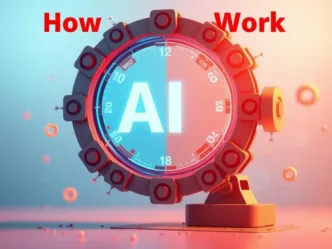

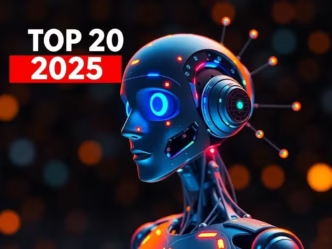



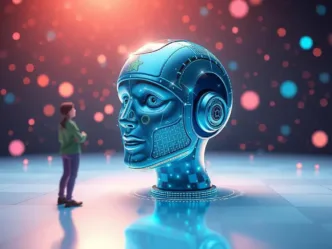
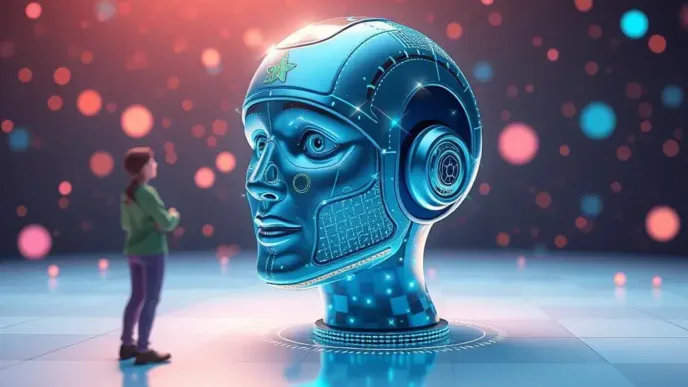




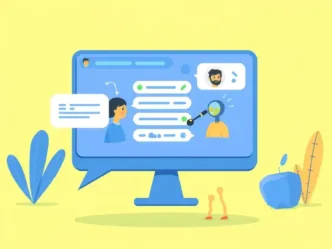

Leave a Reply